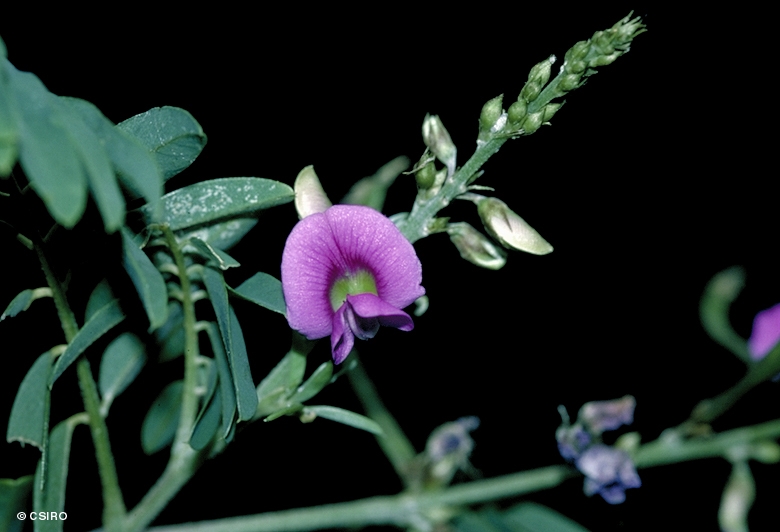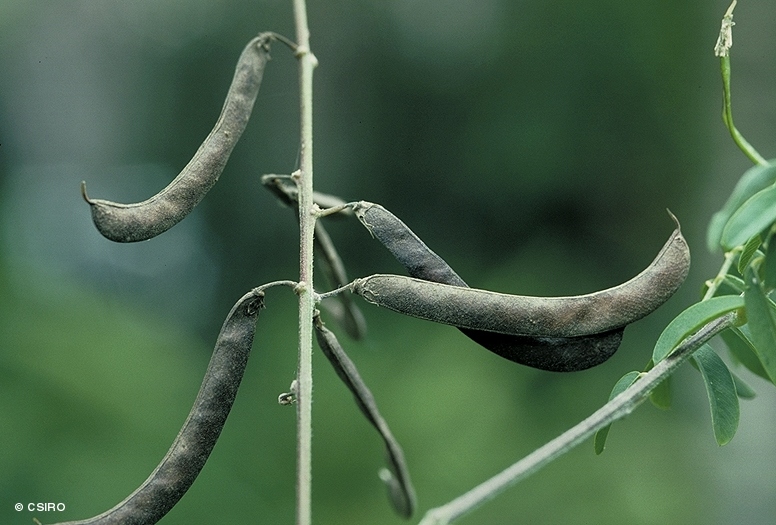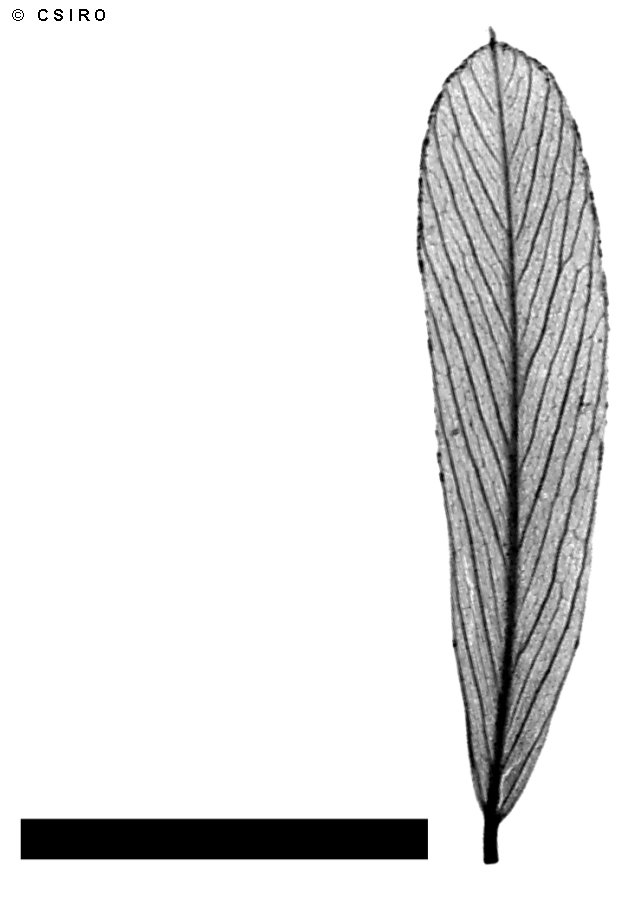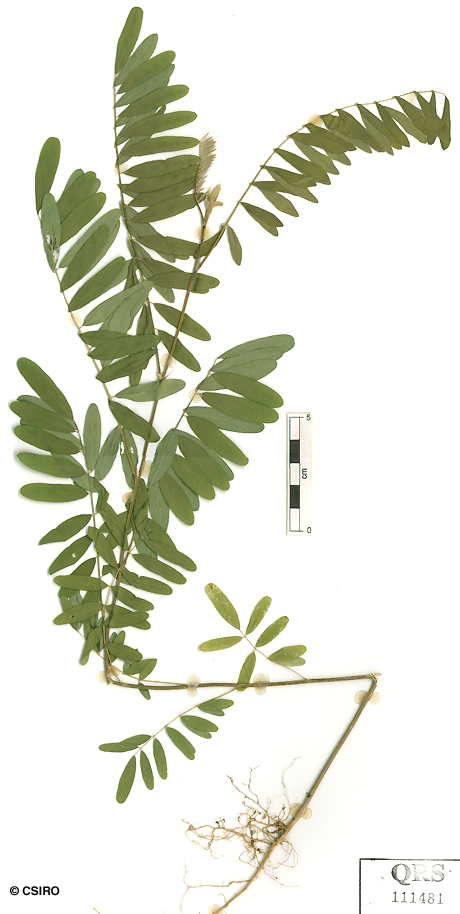Australian Tropical Rainforest Plants - Online edition
Tephrosia purpurea (L.) Pers.





Persoon, C.H. (1806) Synopsis Plantarum 2: 329.
Purple Tephrosia; Tephrosia, Purple; Wild Indigo
Usually flowers and fruits as a shrub about 1 m tall.
Stipules pubescent, filiform, linear-triangular, about 3-5 mm long. Leaflet blades about 12-25 x 3-6 mm. Rhachis, petiole and twigs clothed in appressed white hairs. Lower surface of the leaflet blades densely clothed in pale simple hairs. Lateral veins straight, about 10 or 11 on each side of the midrib.
Pod about 30-40 x 4 mm, outer surface pubescent, often +/- obliquely veined. Embryo +/- L-shaped or triangular in longitudinal section. Cotyledons straight or slightly curved, about 6.5 x 3 mm, radicle about 3 mm long.
Hypocotyl clothed in erect pale hairs. Cotyledons oblong and slightly falcate, about 14-16 x 5-6 mm, base obtuse and slightly oblique. First true leaf simple, oblong, about 30-35 x 9-10 mm. Second leaf trifoliolate. Stem above the cotyledons clothed in prostrate pale hairs. At the tenth leaf stage: leaves compound with about 20-30 leaflets. Leaflet blades about 30-40 x 9-10 mm, undersurface clothed in prostrate hairs. Leaflet stalk about 1 mm long. Stipules linear, about 8-9 mm long, hairy. Seed germination time 19 days.
Occurs in WA, NT, CYP, NEQ, CEQ and southwards to south-eastern Queensland. Altitudinal range from sea level to 750 m. Usually grows in open forest but also found in vine thickets and monsoon forest. Also occurs in America, Africa, Asia and Malesia.
This species may have medicinal properties, and has been used as a fish poison.
The leaves contain the medical drug rutin, and rotenoids which are known insecticides. Judicious use of the plant's toxic properties are presumably the basis of its administration as a worm cure, and its application for skin infections, even leprosy. Cribb (1981).
Has been used as a green manure crop. Sometimes toxic to rats in laboratory tests. Hacker (1990).





